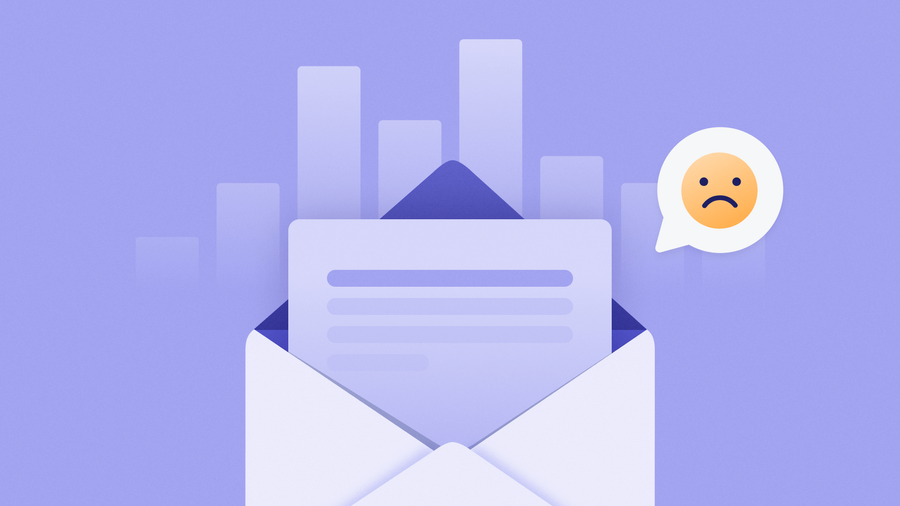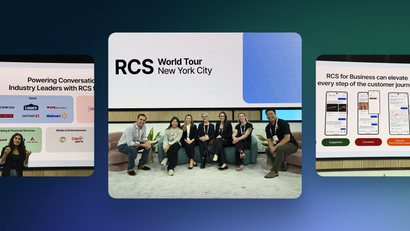Email marketing remains one of the most powerful channels in a marketer's toolkit, delivering an impressive average return on investment (ROI) of 3600% - or $36 for every $1 spent[1]. Yet many businesses struggle to achieve these benchmark returns, leaving significant revenue on the table.
By implementing these proven techniques, you can transform your email program from a cost center to a revenue powerhouse.
Understanding email marketing ROI benchmarks
Before diagnosing what's wrong with your email marketing ROI, you need to understand what "good" looks like in 2025.
Current industry standards
Recent data shows impressive benchmarks across industries:
- The average ROI for marketing emails in the US and UK ranges between 3600% and 3800%[1].
- Nearly 1 in 5 companies achieve email marketing ROI of 7000% or more[1].
- Retail, eCommerce, and consumer goods businesses enjoy the highest email ROI at approximately 4500%[1].
- Large businesses see an even higher average email marketing ROI of 44:1 (4400%) [1].
Key performance indicators that impact ROI
Your ROI calculation depends on several metrics working together:
- Click-through rates: The average is 2.44%[2].
- Unsubscribe rates: The industry average is 0.89%[2].
- Bounce rates: These vary by industry but impact deliverability[2].
When these metrics fall below benchmarks, your ROI suffers. Understanding which specific metrics are underperforming is the first step toward improvement.
Common reasons for underperforming email ROI
If your email marketing isn't delivering the expected returns, several factors could be responsible.
Poor list quality and management
Your email list is the foundation of your email marketing success. Common problems include:
- Outdated contacts: Subscribers who haven't engaged in 6+ months drag down performance.
- Inadequate segmentation: Sending the same content to everyone ignores individual preferences.
- Insufficient list hygiene: Failing to remove invalid addresses increases bounce rates and damages sender reputation.
Ineffective content strategy
Even with a quality list, weak content will undermine results:
- Generic messaging: Emails that don't speak to specific audience needs get ignored.
- Unclear value proposition: Recipients need to understand "what's in it for me" immediately.
- Poor subject lines: If your subject line doesn't compel opens, nothing else matters.
- Weak calls-to-action: Vague or buried CTAs fail to drive conversions.
Technical and deliverability issues
Technical problems can devastate your ROI:
- Poor mobile optimization: With most emails now opened on mobile devices, non-responsive designs hurt engagement.
- Deliverability problems: Emails that land in spam folders generate zero return.
- Slow loading times: Images or content that takes too long to load leads to abandonment.
- Broken links or tracking: Technical errors prevent conversion tracking and damage user experience.
Strategies to boost your email marketing ROI
Now that we've identified potential problems, let's explore solutions to dramatically improve your returns.
Implement advanced segmentation
Segmentation is perhaps the most powerful way to improve email marketing performance:
- Behavioral segmentation: Target users based on their interactions with previous emails and your website.
- Purchase history: Customize offers based on what customers have bought before.
- Engagement levels: Send different content to highly engaged versus dormant subscribers.
- Customer lifecycle stage: Adjust messaging for prospects, new customers, and loyal customers.
Optimize email content and design
Content quality directly impacts engagement and conversion:
- Personalize beyond first name: Include relevant product recommendations and content based on individual behavior.
- Create compelling subject lines: Test different approaches to find what drives opens for your audience.
- Streamline design: Focus on clean, mobile-optimized layouts that load quickly.
- Strengthen CTAs: Make buttons prominent, use action-oriented language, and create urgency when appropriate.
Improve deliverability and technical performance
Technical optimization ensures your emails reach and perform well for recipients:
- Authenticate your emails: Implement SPF, DKIM, and DMARC to improve deliverability.
- Monitor engagement metrics: Watch for declining open rates that might indicate deliverability issues.
- Test across devices: Ensure your emails display correctly on all major email clients and devices.
- Optimize send times: Analyze the best times to send marketing emails and schedule accordingly.
Leveraging automation to scale your ROI
Manual email marketing can't achieve the ROI potential that automation unlocks.
Automated workflows that drive results
Implement these high-performing automated sequences:
- Welcome series: New subscribers have 3x higher engagement rates - capitalize with a strategic onboarding sequence.
- Abandoned cart recovery: Recover up to 10% of abandoned carts with timely, cart recovery emails.
- Post-purchase sequences: Increase repeat purchases with targeted follow-ups based on what customers bought.
- Re-engagement campaigns: Win back dormant subscribers before they completely disengage.
Personalization at scale
Modern email marketing requires personalization beyond basic fields:
- Dynamic content blocks: Show different content to different segments within the same email.
- Behavioral triggers: Send emails based on specific user actions or inactions.
- Predictive recommendations: Use algorithms to suggest products most likely to convert.
- Time-sensitive personalization: Adjust content based on time of day, day of week, or seasonal factors.
Measuring and optimizing email marketing ROI
Improvement requires consistent measurement and optimization.
Setting up proper tracking
Accurate ROI calculation depends on comprehensive tracking:
- UTM parameters: Add tracking codes to all email links.
- Conversion tracking: Measure not just clicks but actual purchases or desired actions.
- Attribution modeling: Understand email's role in the broader customer journey.
- Lifetime value analysis: Calculate how email impacts customer LTV, not just immediate conversions.
A/B testing framework for continuous improvement
Systematic email A/B testing drives ongoing ROI growth:
- Identify variables: Select one element to test (subject line, CTA, send time, etc.).
- Create variations: Develop alternatives based on research and hypotheses.
- Split your audience: Use statistically significant sample sizes.
- Analyze results: Look beyond opens/clicks to conversion impact.
- Implement winners: Apply successful elements to future campaigns.
- Repeat: Continuous testing yields compounding improvements.
Integrating email with multi-channel messaging
Email performs best as part of a coordinated messaging strategy.
Creating Cohesive Customer Journeys
Modern consumers interact across multiple channels:
- Cross-channel coordination: Ensure email messaging aligns with push notifications, SMS, and in-app messages.
- Channel preferences: Respect user preferences for different types of communications.
- Sequential messaging: Use different channels at different stages of the customer journey.
- Unified data: Maintain consistent personalization across all touchpoints.
With a platform like OneSignal, you can orchestrate customer journeys in a simple drag-and-drop builder. When you add email alongside push notifications, SMS, and in-app messaging, you create seamless customer experiences that maximize engagement and conversion.
Frequently asked questions
What is a good email marketing ROI in 2025? The average email marketing ROI in 2025 is between 3600% and 3800%, or $36-$38 for every $1 spent[1]. However, nearly 20% of companies achieve ROI of 7000% or higher[1].
What's more important: open rate or click-through rate? While both matter, click-through rate (industry average: 2.44%[2]) more directly impacts ROI as it indicates interest in your offer. However, emails must be opened before clicks can occur, making both metrics important parts of the conversion funnel.
OneSignal helps you deliver email in an omnichannel world
Email marketing works best when every message feels relevant, timely, and connected to a larger journey. With advanced personalization, automation, and multi-channel coordination, OneSignal helps you move beyond benchmarks and build email programs that truly deliver on ROI.
Citations
[1] https://www.emailmonday.com/email-marketing-roi-statistics/
[2] https://www.webfx.com/blog/marketing/email-marketing-benchmarks/




